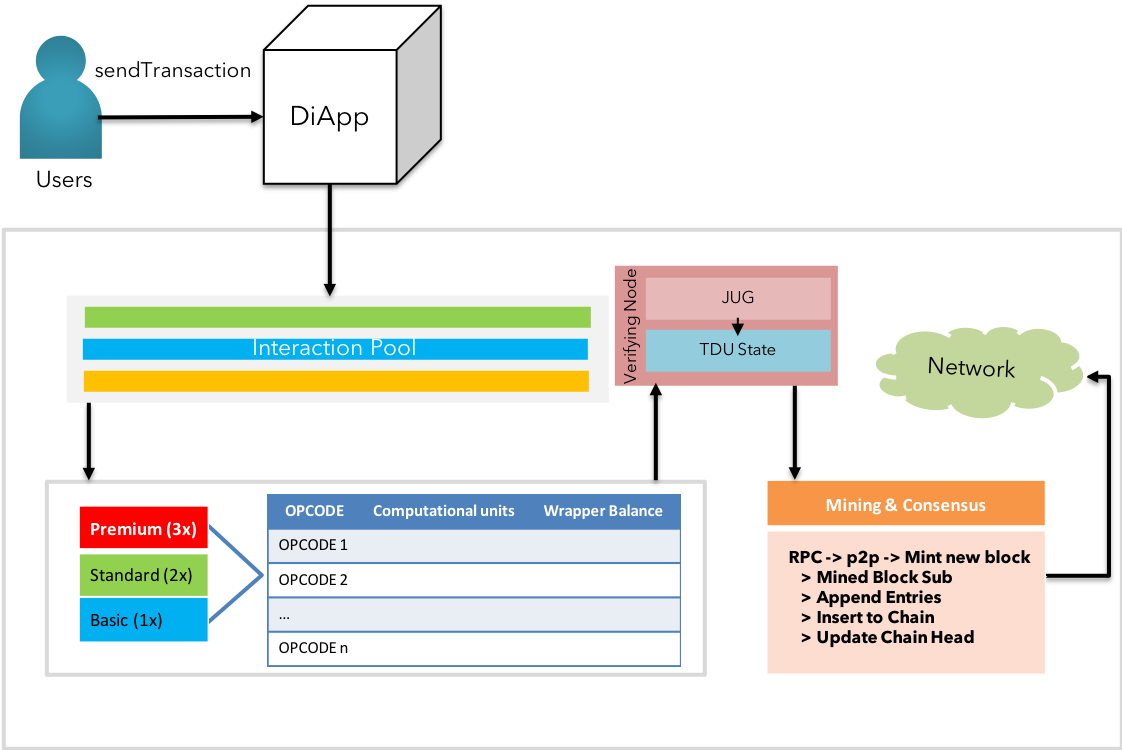Transaction lifecycle

Fig 10: KIP's transaction lifecycle
The revised flow with auxiliary features offered by KIP are as follows:
KIP Transaction Lifecycle - Formal Notation:
STEP 1: User initiates a transaction by signing with the private key
STEP 2: Transaction is bundled with nonce, platform fee, tagged asset class & tier by diApp
STEP 3: The bundle is transported by the diApp into KIP network's transaction pool
STEP 4: The grand nodes managing the transaction pool assigns the sorted transactions to respective state channels based on the asset class, and tiers.
STEP 5: The ordered transactions are assigned to the star nodes, followed by the service nodes in the respective state channel (fast followers)
STEP 6: The service nodes verify the transaction versus the account's attributes
STEP 7: The star nodes confirm the fast follow & broadcast the transactions to other state channels and shadow pool
STEP 8: The followers in the other state channels & the shadow pools formally confirm the transactions
STEP 9: Consensus is achieved and the block is published
STEP 10: Corresponding accounts are updated with the new state
Description 4.13:
$$ \Delta $$